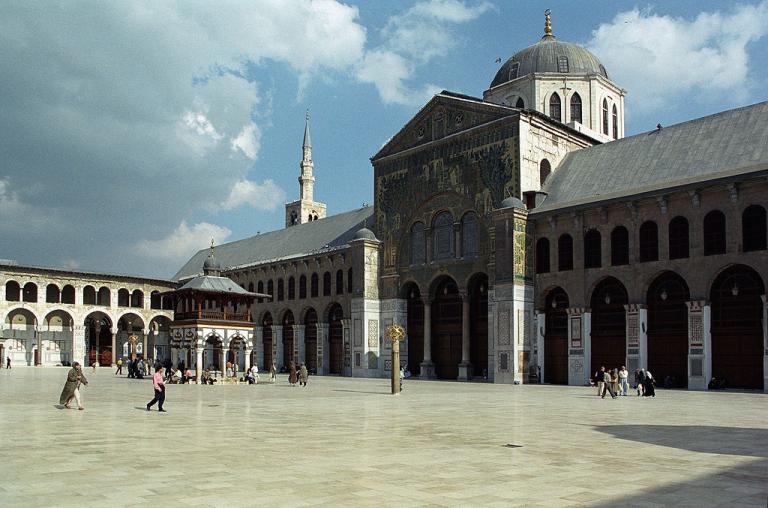
(Wikimedia Commons public domain image)
I share here a couple of passages extracted for my future use from Michael Bonner, Jihad in Islamic History: Doctrines and Practice (Princeton and Oxford: Princeton University Press, 2006).
In the first, Professor Bonner refers to the Umayyad Dynasty, which came to power after the close of the reigns of the four so-called Rashidun (or “rightly-guided”) caliphs — Abu Bakr, ‘Umar, ‘Uthman, and ‘Ali — who had succeeded the Prophet Muhammad, in their turns, as the rulers of the Islamic umma after his death in AD 632. The Umayyads ruled from Damascus between AD 661 and AD 750, when they were overthrown by the ‘Abbasids..
According to [Khalid Yahya] Blankinship, it was the jihad that provided the ideological basis to the entire Umayyad enterprise: “The [Umayyad] caliphate constituted the jihad state par excellence. Its main reason for existence, aside from maintaining God’s law, was to protect Islam and to expand the territory under its control, and its reputation was strongly bound to its military success. . . . Joseph Schacht, a modern historian of early Islamic law, thought that the imperial legislation of the Umayyads provided much of the material basis for what eventually became Islamic law, especially in the area of the law of war (siyar). In other words, the Umayyad caliphs, through their governors, generals, and judges, began and developed much of what eventually became the Islamic law of war; only afterward was this law of war ascribed to more acceptably Islamic sources such as the Companions of the Prophet and, of course, the Prophet himself. (122)
In this view [he is evidently summarizing Bernard Lewis’s important 2001 book What Went Wrong?], the Muslims enjoyed cultural, intellectual, and material superiority over the western Europeans for many centuries. And while Muslim historians and geographers gathered knowledge about what they recognized as the other true civilizations, especially China and India, few of them showed any interest in those boggy, frozen, barbaric lands that made up western Europe. Muslim attitudes toward non-Muslims were formed at home, in the Muslim lands, and included both tolerance and a sense of superiority. Thus the Muslims were unprepared, especially from the fifteenth century onward, when the Europeans grew prosperous and powerful and eventually outflanked the principal Muslim power of the time, the Ottoman Empire. Now for years these same Ottomans had adapted European technology and often made better use of it than the Europeans themselves. But in the modern age, the Ottomans failed to keep up. Their vocabulary for understanding the West did not advance far beyond what it had been in the early Middle Ages. Efforts at reform came too late. In this view, the Crusades represent both a first moment of European expansion into the Islamic heartland and, at the same time, a first failure on the part of Islam to recognize its adversary for who he truly was. (138-139)












